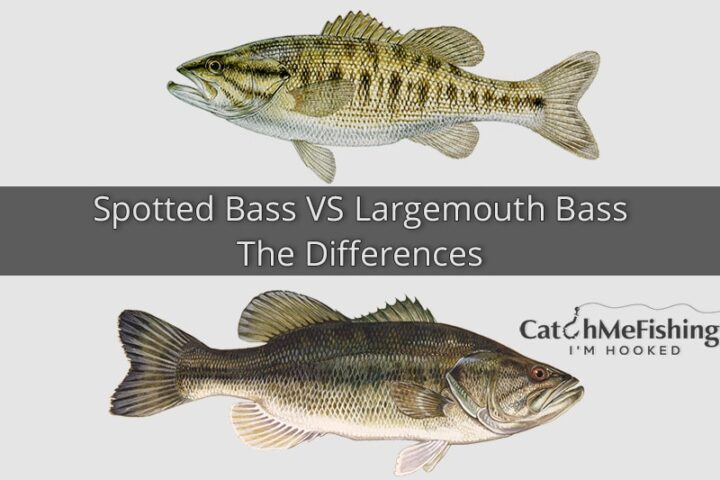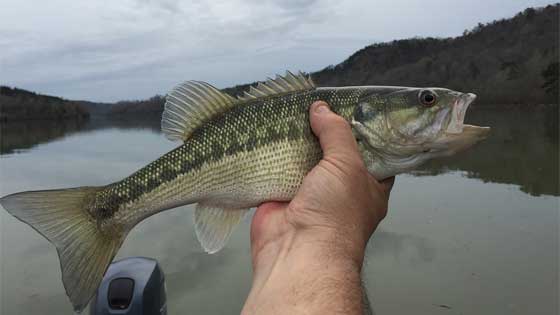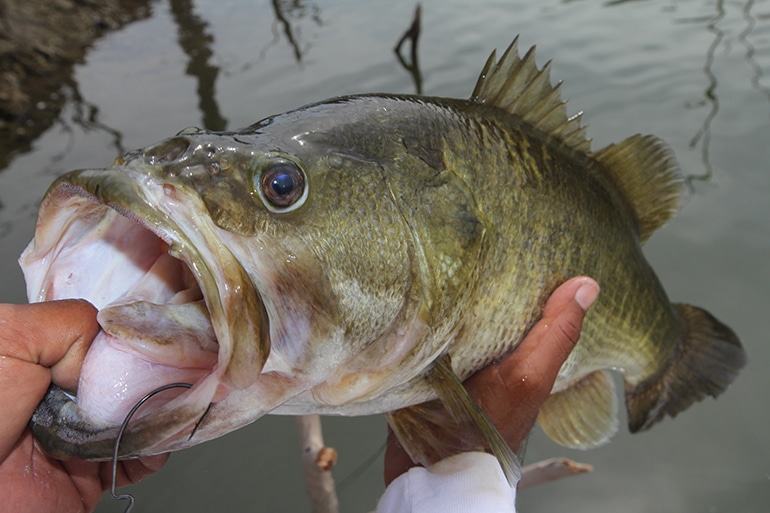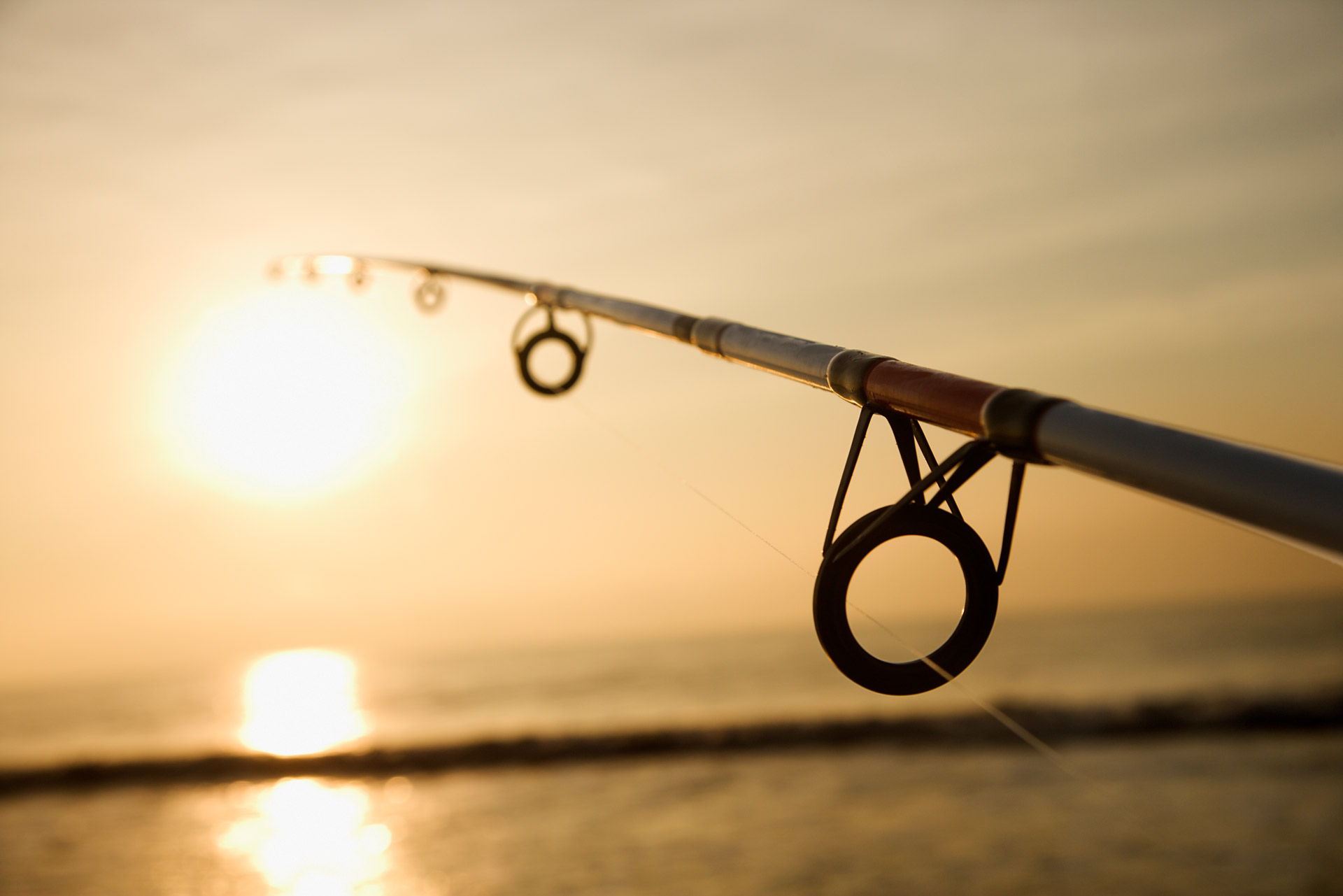Spotted Bass VS Largemouth Bass : The Key Differences

Bass is one of the most popular fishing targets in the US. There is an abundance of bass species that differ in size, color, habitats, eating habits, and other features.
The most common bass fish include spotted and striped bass, largemouth and smallmouth bass, black, yellow, and white bass, Guadalupe bass.
Each of the species requires a unique understanding and special techniques of fishing.
In order to have a fruitful fishing experience, you need to know all the key differences between bass types.
Spotted Bass vs Largemouth bass are some of the most popular bass. Understanding their differences just by looking at them is difficult, they both have unique features which you need to know for tactical fishing.
Let’s now dive into more details about the similarities and differences between Spotted Bass Vs Largemouth bass.
The appearance of Spotted Bass VS Largemouth Bass
Spotted Bass Appearance

- Size: Its length can reach up to 64 cm/25 in.
- Weight: the average weight of spotted bass is 5.2 kg/11 lb.
- Color: the color of a spotted bass ranges between light green and brown. Their bodies are covered in black marks as the name suggests.
- Jaws: spotted bass has a small jaw relative to the largemouth, it doesn’t extend past the eye. The top and bottom parts are almost equal in length.
- Teeth: spotted bass have a tooth patch right in the middle of a tongue.
- Dorsal fin: spotted bass fin is separated into two parts, top and bottom, but they are much closer together than the largemouth, sometimes they touch into "one".
Largemouth Bass Appearance

- Size: on average largemouth bass reaches up to 40 cm/15.7 in.
- Weight: largemouth bass weights up to 6.8 kg/15 lb on average.
- Color: the most common colors of largemouth bass are dark brown and dark green. If you take a close look, their color may change a little depending on its surrounding. Largemouth bass has spots that form horizontal lines on their sides.
- Jaws: largemouth has a big jaw that sticks out in the bottom and extends past its eye.
- Teeth: they have needle-like teeth that are small and inward-facing. The Largemouth tongue is smooth, which makes it easy to distinguish largemouth from spotted bass.
- Dorsal fin: largemouth dorsal fin is separated into two by a deep notch, much more noticeably than the spotted bass.
How to Tell the Difference between Spotted Bass VS Largemouth Bass?
Unlike redeye bass, the differences between spotted and largemouth bass are a lot harder to distinguish. At first, one might think that largemouth and spotted bass look pretty much the same. But if you take a closer look, you will identify them right away. You just need to know the key differences and similarities.
Just by looking at their size and weight, we can’t tell the difference but the color shades and body patterns are clear indications of the fish’s type. If it’s still hard to tell them apart, the dorsal fin, teeth, and patched tongue are straight giveaways.
Also, largemouth bass has a puffy white belly. Spotted bass has spots all over the body, not only the sides.
Where to Find Spotted Bass VS Largemouth Bass?
Now that you know how to distinguish between spotted bass and largemouth, you need to know where to look for them.
Spotted Bass Location and Habitat
The most preferred habitat for spotted bass is slow-moving waters, so you’ll easily find them in small rivers and streams. They are also very common in reservoirs, but you’ll most likely never find them in ponds and natural lakes, which are too murky for them.
The perfect habitat for a spotted bass is clear, well-vegetated water. They mostly prefer cooler temperatures relative to the largemouth bass. So, spotted and largemouth bass are rarely found in the same location.
Largemouth Bass Location and Habitat
Largemouth usually are found in natural lakes, ponds, creeks, rivers, swamps, and other water bodies. They prefer clear and vegetated water.
Unlike spotted bass, largemouth bass don’t favor cool temperatures and remain in warmer parts of the water.
When the spawning season comes close, you’ll most likely find largemouth in areas with firm bottom of mud, sand, and gravel.
The most recommended places to look for trophy-sized largemouth bass are grasses, rocks, stumps, weed beds, and brush piles.
Covers are strategic areas for largemouth, as they usually hunt there.
Eating Habits of Spotted Bass VS Largemouth Bass
Bass are carnivorous; generally, they eat what they see and whatever catches their eye. But each of the species has a different eating habit and food preferences.
What do Spotted Bass Eat
Spotted bass, like any other bass, are opportunistic creatures and will eat every moving object, but what do they prefer?
Spotted bass are less aggressive and predatory, compared to largemouth bass.
Adult spotted bass usually go after:
- Small fishes
- Aquatic insects
- Crayfish
- Lizards
Younger spotted bass feed on:
- Small crustaceans
- Copepods
- Insects
What do Largemouth Bass Eat?
Largemouth bass eat almost anything that can fit in their mouth. As long as something looks interesting and alive, they’ll try to catch it.
Adult largemouth typical food are:
- fish (perch, sunfish, shad)
- Crayfish
- Snakes and turtles
- Small aquatic birds
- Sometimes they eat mice, trout, baby ducks
- When it comes to surviving, largemouth bass are cannibalistic and go after small bass.
The most common food for young largemouth bass are:
- Insects
- Small fish
- crustaceans
Fishing Tips for Spotted Bass VS Largemouth Bass
- Season: largemouth bass are hard to catch in winter. They are pretty inactive during cold seasons and that makes them difficult to find and catch. But spotted bass remain active during the whole year. They prefer much colder temperatures than largemouth, so winter cold is not a hindrance factor for them.
- Time of the day: largemouth bass are easier to find in the morning and evening, as they prefer cool but not cold temperatures. Spotted bass doesn’t have a problem with cold temperature, so you can even fish late in the evening or early in the morning.
- Baits: Choosing the right lure for bass is a primary part of getting ready for the fishing experience. Both species could be caught by the same baits. Some of the best baits are baitfish, bluegills, crayfish. Also, jigs, plastic worms, spinnerbaits, and other artificial realistic lures would perfectly do the job. Crankbaits are excellent to catch all types of bass including these two. Read our 8 Best Crankbaits For Bass Fishing – Ultimate Guide & Review to gain an understanding of the best crankbaits we reviewed to give you the edge.
- Strategic location: largemouth bass depend on the covers, which make them easier targets. Spotted bass inhabit reef poles during the spawning season.
Ready to Go Fishing?
Knowing the similarities and differences of bass species gives you an extra privilege and advantage to target bass of your choice.
Whether you are an amateur fisher or an experienced fisherman, understanding all the differences in appearance, fish locations, eating habits, and catching methods between Spotted Bass vs Largemouth bass will help you tailor your techniques.
If you are wondering whats the differences between Largemouth Bass vs Smallmouth bass we have you covered here.
Now that you have all the key information about the two species, you are one step closer to catching a spotted or largemouth bass.



